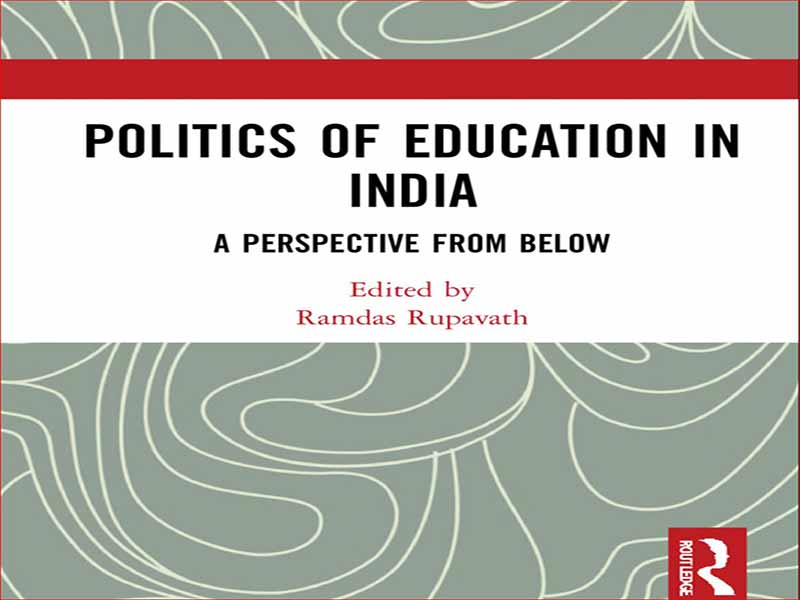- عنوان کتاب: Politics of Education in India
- نویسنده: Ramdas Rupavath
- حوزه: خط مشی آموزش
- سال انتشار: 2022
- تعداد صفحه: 255
- زبان اصلی: انگلیسی
- نوع فایل: pdf
- حجم فایل: 2.99 مگابایت
هند یک کشور کثرت گرا با تنوع غنی و مناسبی است که در تعداد زیادی از جوامع، مذاهب، گویش ها و سهام نژادی منعکس شده است. مردم هند دارای موقعیتها، شبکهها و اجتماعات مختلف هستند. متداول بودن چنین کثرت گرایی، بافت اجتماعی را لایه ای و متنوع کرده است. بر این اساس، درهای باز اجتماعی و پولی به طور متفاوت در خطوط ایستگاه و وابستگی های طبقاتی گردش می کنند. این بخش بیان می کند که هند روستایی با نبود دفاتر زیرساختی و نیاز و الزام بی حد و حصر مشخص می شود که باعث گسترش لایه هایی از عدم تعادل و ناهماهنگی در سطوح مختلف شده است. بنابراین، نه تنها برخی از گردهماییهای منکر شده و بخشهایی از مردم نتوانستهاند در طول زمان صرف شده در پیشرفت شرکت کنند، بلکه سرعت روند بهبود مالی کشور نیز با مشکل مواجه شده است.
ویژگی هند روستایی فقدان امکانات زیرساختی و فقر و بدهکاری گسترده است که منجر به تداوم لایه هایی از نابرابری ها و نابرابری ها در سطوح مختلف شده است. در نتیجه نه تنها گروهها و اقشار محروم خاصی از مشارکت در روند توسعه ناتوان شدهاند، بلکه سرعت روند توسعه اجتماعی-اقتصادی کشور نیز با مشکل مواجه شده است. این امر به ویژه در مورد قبایل برنامهریزی شده (STs) شدید است، زیرا آنها نه تنها در مناطق داخلی زندگی میکنند که از امکانات اولیه زندگی مدرن محروم هستند، بلکه از نظر اجتماعی و اقتصادی نیز در حاشیه هستند. محرومیت اجتماعی آنها به درستی در عقب ماندگی تحصیلی آنها منعکس شده است. در این زمینه میتوان گفت که هند قبیلهای کمترین توسعهیافته است و قبایل بدترین آسیبدیدگان را به خود اختصاص دادهاند، زیرا در مضیقه مضاعف قرار دارند.
India is a pluralist nation with a rich and decent variety that has been reflected in the huge number of societies, religions, dialects, and racial stocks. The Indian populace incorporates various positions, networks, and social gatherings. The commonness of such pluralism has made the social texture stratified and various levelled. Accordingly, social and monetary open doors are differentially circulated on the lines of station and class affiliations. The section expresses that rural India is characterized by the absence of infrastructural offices and boundless neediness and obligation, which has prompted the propagation of layers of imbalances and incongruities at different levels. Therefore, not just have certain denied gatherings and segments of the populace not been able to partake during the time spent in advancement, the very pace of the nation’s procedure of financial improvement has been hampered.
Rural India is characterized by the lack of infrastructural facilities and widespread poverty and indebtedness, which has led to the perpetuation of layers of inequalities and disparities at various levels. As a result, not only have certain deprived groups and sections of the population been made unable to participate in the process of development, but the very pace of the country’s process of socio-economic development has been hampered. This is particularly severe in the case of Scheduled Tribes (STs) as they not only live in hinterlands, bereft of basic amenities of modern life, but are also socially and economically marginalized. Their social deprivation is aptly reflected in their educational backwardness. In this context, it can be said that tribal India is the least developed area and the tribals are the worst sufferers as they are doubly disadvantaged.
این کتاب را میتوانید از لینک زیر بصورت رایگان دانلود کنید:
Download: Politics of Education in India




































نظرات کاربران